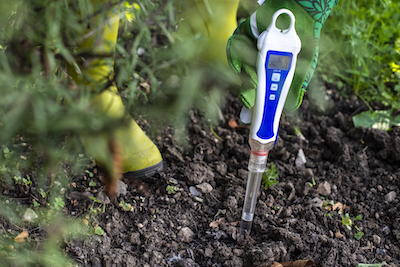Fertilizers That Are Harmful to Soil Microorganisms
Fertilizers have played a pivotal role in modern agriculture, contributing to increased crop yields and food production. They are formulated to provide essential nutrients like nitrogen, phosphorus, and potassium that plants require for growth.
However, the application of fertilizers isn’t without consequences, and one area of concern is their potential harm to soil microorganisms.
In this article, we will explore the relationship between fertilizers and soil microorganisms, shedding light on the effects, both positive and negative, that fertilizers can have on these tiny but crucial inhabitants of the soil.
By the end of this article, you’ll have a comprehensive understanding of how fertilizers impact soil microorganisms and what steps you can take to maintain a healthy and balanced soil ecosystem.

Adverse Effects of Fertilizers On Soil Microorganisms
Fertilizers, while beneficial for plant growth, can indeed have adverse effects on soil microorganisms. Here are some ways in which they can be harmful:
1. Altered Microbial Composition
When fertilizers are applied to soil, they bring about a significant transformation in the composition of soil microorganisms. This transformation occurs because fertilizers provide an abundance of nutrients that some microorganisms thrive on, while others struggle to adapt.
As a result, the natural balance within the soil microbiome is disrupted. Microbes that can utilize the newly available nutrients proliferate, often at the expense of other species. This shift in the microbial landscape can have far-reaching consequences, influencing the soil’s overall health and functionality.
2. Reduced Microbial Diversity
A diverse soil microbiome is the cornerstone of a healthy soil ecosystem. However, the excessive use or improper application of fertilizers can jeopardize this diversity. Microbial communities that are exposed to an overload of nutrients tend to become imbalanced.
This imbalance can lead to a decline in the variety of microorganisms present in the soil. When microbial diversity decreases, the soil becomes more vulnerable to diseases and less resilient to changes in its environment. A rich and varied microbial community, on the other hand, contributes to soil stability and resilience.
3. Nutrient Imbalance
While fertilizers are intended to supply essential nutrients to plants, an excessive application can lead to nutrient imbalances within the soil. This imbalance can manifest as an overabundance of certain nutrients, creating conditions where specific microorganisms flourish while others face nutrient deprivation.
For example, an excess of nitrogen can favor the proliferation of nitrate-reducing bacteria, while other microbial groups may struggle due to a lack of balanced nutrients. This skewed nutrient distribution can disrupt the intricate web of interactions among soil microorganisms, potentially affecting the soil’s long-term health and productivity.
4. Soil Acidification
Certain fertilizers, particularly those containing ammonium-based compounds, can induce soil acidification. Acidic soils are less hospitable to many soil microorganisms, impacting their populations and activities. The acidity interferes with the functioning of enzymes and other biochemical processes crucial to microorganisms.
Consequently, microorganisms that prefer neutral pH levels may dwindle in numbers, while acid-tolerant species might become dominant. This alteration in the microbial community can influence nutrient cycling and compromise the overall health of the soil.
5. Microbial Stress
Excessive levels of certain nutrients, such as nitrates, can impose stress on soil microorganisms. High concentrations of these nutrients can overwhelm the metabolic processes of some microbes, leading to reduced microbial activity.
This reduced activity can disrupt essential soil functions, including nutrient cycling and organic matter decomposition. The stress experienced by soil microorganisms due to an overabundance of specific nutrients underscores the importance of precise and responsible fertilizer application practices to maintain a healthy soil ecosystem.
6. Runoff Contamination
Another consequence of improper fertilizer use is the potential for runoff contamination. When plants cannot absorb all the applied fertilizers, excess nutrients can be washed away by rainwater. This runoff can carry fertilizers into nearby water bodies, contaminating aquatic ecosystems.
In aquatic environments, excessive nutrient levels can lead to water quality problems such as algal blooms and oxygen depletion.
These changes can harm not only aquatic microorganisms but also the broader aquatic ecosystem, emphasizing the interconnectedness of terrestrial and aquatic environments in the context of fertilizer use.
Understanding the multifaceted effects of fertilizers on soil microorganisms is crucial for sustainable agriculture and responsible environmental stewardship.
By adopting best practices in fertilizer application and soil management, we can minimize these adverse effects, maintain a balanced soil microbiome, and promote healthy and productive ecosystems.

Mitigating Harm to Soil Microorganisms
While fertilizers can be harmful to soil microorganisms, there are strategies to mitigate these effects and promote a healthier soil ecosystem:
1. Use Fertilizers Sparingly
Avoid excessive fertilizer use. Conduct soil tests to determine nutrient deficiencies accurately, and only apply the nutrients that are truly needed. This judicious approach not only conserves resources but also minimizes the risk of overloading the soil with nutrients, thereby protecting the delicate balance of the soil’s microbial community.
2. Choose Slow-Release Fertilizers
Opt for slow-release fertilizers. These specialized formulations provide nutrients gradually, reducing the risk of nutrient imbalances and stress on microorganisms.
Slow-release fertilizers offer a steady supply of nutrients, ensuring that soil microbes can effectively adapt to changing conditions without experiencing the shocks of sudden nutrient influxes.
3. Incorporate Organic Matter
Enhance your soil with organic matter, such as compost, to help maintain microbial diversity and improve soil structure.
Organic matter serves as both a nutrient source and a habitat for beneficial microorganisms, fostering a thriving microbial community. This enrichment not only nourishes your soil but also supports the intricate web of life beneath the surface.
4. Rotate Crops
Implement a crop rotation strategy to break the cycle of nutrient depletion and promote a more diverse soil microbiome.
By varying the types of crops grown in successive seasons, you encourage different groups of microorganisms to interact with the roots of various plants. This diversity in plant-microbe relationships reduces the dependence on fertilizers and fosters a more resilient and adaptable soil ecosystem.
5. Implement No-Till Farming
Embrace no-till farming practices to preserve the soil’s natural structure and minimize disruption to soil microorganisms. By avoiding the traditional plowing or tilling of soil, you create an environment where microbes can thrive undisturbed.
This approach not only safeguards microbial populations but also helps retain soil moisture and prevent erosion, promoting a healthier and more sustainable agricultural system.
6. Monitor pH Levels
Regularly test soil pH and take measures to correct overly acidic or alkaline conditions. Maintaining the optimal pH range for soil microorganisms, typically slightly acidic to neutral, is essential for their well-being.
Adjusting soil pH when necessary ensures that microorganisms can carry out their vital functions efficiently, contributing to a robust and productive soil ecosystem.
By implementing these proactive measures, you can strike a harmonious balance between the benefits of fertilizers and the preservation of soil microorganisms.
These practices not only mitigate potential harm but also contribute to the long-term vitality and sustainability of our soils, fostering healthier ecosystems and more resilient agricultural systems.

In Conclusion
In the world of agriculture and gardening, the use of fertilizers is a common practice. While they undoubtedly contribute to plant growth and productivity, their impact on soil microorganisms should not be overlooked. Fertilizers can be harmful when used in excess or improperly, leading to disruptions in the soil ecosystem.
To ensure a healthy and balanced soil microbiome, it’s crucial to use fertilizers judiciously, opt for slow-release or organic options, and implement soil management practices that promote microbial diversity.
By doing so, you can harness the benefits of fertilizers without compromising the well-being of the vital soil microorganisms that support plant growth.
Remember that the health of your soil is the foundation of a thriving garden or farm, and nurturing it should always be a top priority.
FAQs
Can soil microorganisms recover from fertilizer-induced harm?
In many cases, soil microorganisms can recover if proper soil management practices are followed, such as reducing fertilizer application and improving soil health.
Are there any benefits of fertilizers to soil microorganisms?
Fertilizers can provide essential nutrients that some soil microorganisms require for their metabolic processes. However, excessive use can offset this balance.
How can I test my soil for nutrient levels?
You can test your soil’s nutrient levels using soil testing kits or by sending samples to a soil testing laboratory. It’s essential to know the nutrient status of your soil before applying fertilizers.
What is the ideal pH range for soil microorganisms?
Most soil microorganisms thrive in a pH range of 6 to 7. However, specific microorganisms may have different pH preferences.

